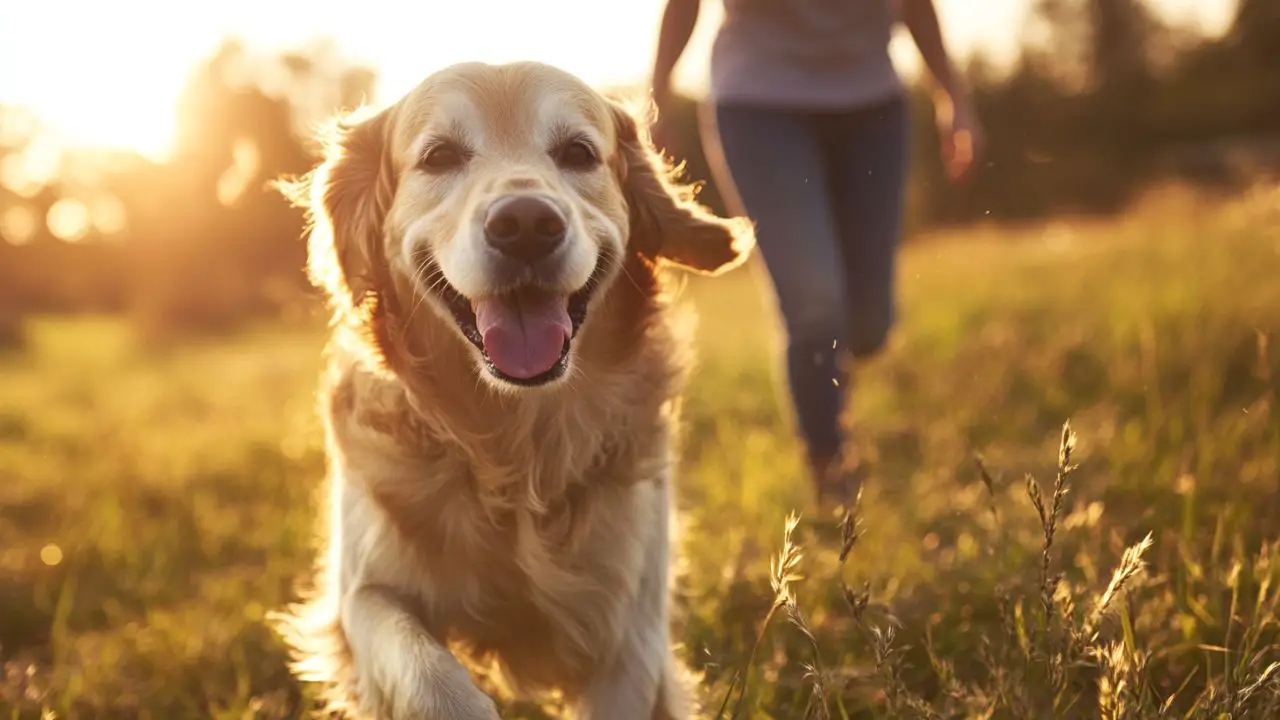Off-leash training is an essential skill for dogs and their owners, offering greater freedom and a stronger bond.
However, it requires patience, consistency, and the right approach to ensure safety and success.
In this article, we’ll explore four key tips to help you achieve successful off-leash training with your furry friend.
Tip 1: Master On-Leash Obedience First
Before venturing into off-leash territory, it’s crucial to have a solid foundation of on-leash obedience.
Basic Commands are Non-Negotiable
Ensure your dog responds reliably to basic commands like “sit,” “stay,” “come,” and “heel” while on a leash.
These commands form the backbone of off-leash control.
Practice in Various Environments
Once your dog masters commands at home, practice in different settings with increasing distractions.
This helps your dog generalize the commands to various environments.
The Art of Recall
Pay special attention to perfecting your dog’s recall, as it’s the most critical command for off-leash safety.
Use high-value treats and lots of praise to make coming to you the best thing ever for your dog.
Tip 2: Use a Long Line for Transition
Transitioning from on-leash to off-leash isn’t a single leap but a gradual process.
The Long Line Advantage
Start with a long training lead (15-30 feet) to give your dog more freedom while maintaining control.
This allows your dog to experience more independence while you can still intervene if needed.
Simulating Off-Leash Experiences
Use the long line to practice recall and other commands in open spaces.
Let the line drag, stepping on it only if you need to regain control.
Gradual Increase in Freedom
As your dog becomes more reliable, allow more slack in the line.
This gradual increase in freedom helps build your dog’s confidence and your trust.
Tip 3: Choose the Right Environment
The environment plays a crucial role in successful off-leash training.
Start in Enclosed Areas
Begin off-leash practice in secure, enclosed areas like a fenced backyard or a dog park during off-hours.
This minimizes risks while your dog is still learning.
Quiet Areas Before Busy Ones
Progress to quiet, open areas with few distractions before attempting busy parks or trails.
This helps your dog focus on you rather than getting overwhelmed by the environment.
Know Your Dog’s Triggers
Be aware of what might overly excite or distract your dog (e.g., other dogs, wildlife) and plan accordingly.
Avoid areas with these triggers until your dog’s off-leash skills are rock solid.
Tip 4: Make Yourself More Interesting Than Distractions
For successful off-leash experiences, you need to be the most exciting thing in your dog’s environment.
High-Value Rewards
Use treats that your dog goes crazy for during off-leash training sessions.
These should be special treats reserved only for these important training moments.
Incorporate Play
If your dog is play-motivated, bring their favorite toy and engage in short play sessions during training.
This reinforces that staying near you is fun and rewarding.
Unpredictability is Key
Change direction frequently and use an excited tone to keep your dog’s attention on you.
This unpredictability makes you more interesting than static environmental distractions.
The “Check-In” Game
Reward your dog for voluntarily checking in with you during off-leash time.
This encourages them to keep an eye on you even when they have freedom to explore.
Safety Considerations
While not a specific training tip, safety should always be a top priority in off-leash training.
Always Carry a Leash
Even with well-trained dogs, always have a leash handy for unexpected situations.
It’s not just good practice; it’s often the law.
Identification is Crucial
Ensure your dog wears a collar with ID tags and is microchipped in case of separation.
This is especially important when you’re working on off-leash skills.
Know the Laws
Be aware of leash laws in your area and only practice off-leash in permitted areas.
Respecting these laws keeps everyone safe and avoids potential fines.
Conclusion: Patience Pays Off in Off-Leash Freedom
Successful off-leash training is a journey that requires time, patience, and consistent effort.
By mastering on-leash obedience, using a long line for transition, choosing appropriate environments, and making yourself the center of your dog’s attention, you can achieve reliable off-leash behavior.
Remember, every dog is different, and some may take longer than others to master these skills.
The key is to progress at a pace that’s comfortable for both you and your dog, always prioritizing safety.
With dedication and the right approach, you can enjoy the freedom and bond that comes with having a well-trained off-leash dog.
The rewards of being able to hike, play, and explore together off-leash are well worth the effort.
So grab those treats, find a safe space, and start your off-leash training adventure today!
Your furry friend will thank you for the freedom and trust you’ve built together.
SHARE now with your friends!
- Hero Farm Dog Survives Epic Battle with Coyote Pack - December 9, 2024
- The 10-Minute Bedtime Routine That Changed My Dog’s Sleep Forever - November 29, 2024
- Creating a Safe Space for Nervous Pets: Your Guide to Pet-Friendly Havens - November 25, 2024

